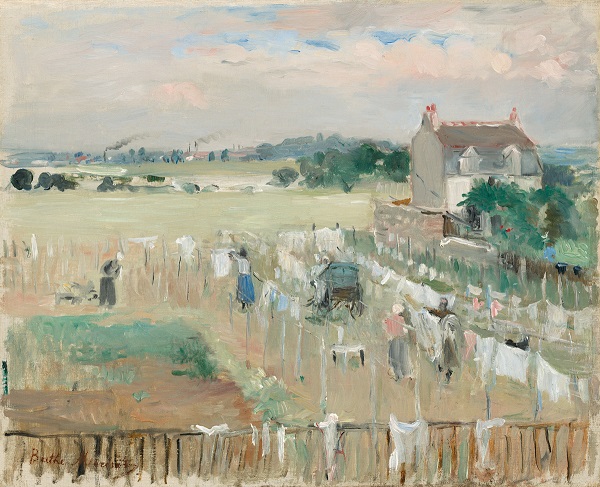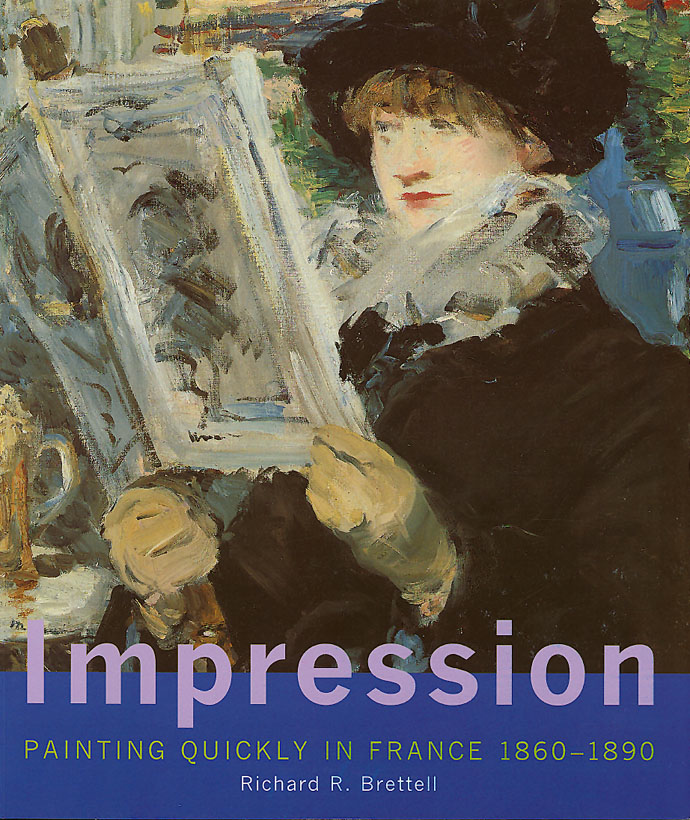
june 17–september 9, 2001
Berthe Morisot
The work of Berthe Morisot (1841-1895), like that of Pierre-Auguste Renoir, was generally either praised or reviled during her lifetime for being unfinished, indeterminate, and hurried. Charles Ephrussi, art collector and owner of the periodical La Gazette des beaux-arts, remarked that "She grinds flower petals on her palette, in order to spread them later onto her canvas with airy, witty touches, thrown down a little haphazardly." Morisot's Impressions, like Renoir's, forced the viewer to think less about the represented subjects than about the transformation of them on canvas. The Artist's Daughter Julie, with Her Nanny (The Sewing Lesson) and Interior of a Cottage are gloriously painted drawings in which each line is a color sensation. In the latter, Morisot painted landscape, genre scene, and still life in one composition, linking them all with a series of purposeful painted lines that seem almost to move around the forms rather than to define them. The sheer abandonment of her gesture and its increasingly non-representational role in her paintings put Morisot at the forefront of Impressionist experimentation.

Berthe Morisot
Hanging the Laundry out to Dry
1875
Oil on canvas, 33 x 40.6 cm
National Gallery of Art, Washington, D.C. Collection of Mr. and Mrs. Paul Mellon

The "point" of Impressionist art was to capture the fleeting moment, the transient effect of a certain place, person, or time. Impressionist artists worked on-site with speed and directness, hoping to distinguish their works with a new freshness, immediacy, and truthfulness. Yet the paintings they exhibited were in fact almost always completed in the studio later. This beautifully illustrated book investigates for the first time the works that might truly be called "Impressions"—paintings that appear to be rapid transcriptions of shifting subjects but were nonetheless considered finished by their makers. Renowned Impressionist scholar Richard R. Brettell identifies and discusses Impressions by some of the best-known artists of the period, including Manet, Monet, Renoir, Sisley, Morisot, Degas, Pissarro, and Caillebotte.
The book surveys the various practices of individual artists in the making, signing, exhibiting, and selling of Impressions. Brettell discusses the pictorial theories behind the paintings, the sales strategies for them, and the various forms they took, including works completed in one sitting, "apparent" Impressions, and repeated Impressions. In a concluding chapter, the author considers a small group of works by Vincent van Gogh, who painted with an almost fanatical rapidity and was the only major Post-Impressionist painter to push the aesthetic of the Impression even further.
This book is the catalogue for an exhibition at the National Gallery in London from November 1, 2000, to January 28, 2001, the Van Gogh Museum in Amsterdam from March 2 to May 20, 2001, and the Clark Art Institute from June 17 to September 9, 2001.
240 pages, 9 3/8 x 11 inches
183 color and six black-and-white illustrations
2000
Published in association with Yale University Press
ISBN 0-300-08446-3 (hardcover)
ISBN 0-300-08447-1 (softcover)
